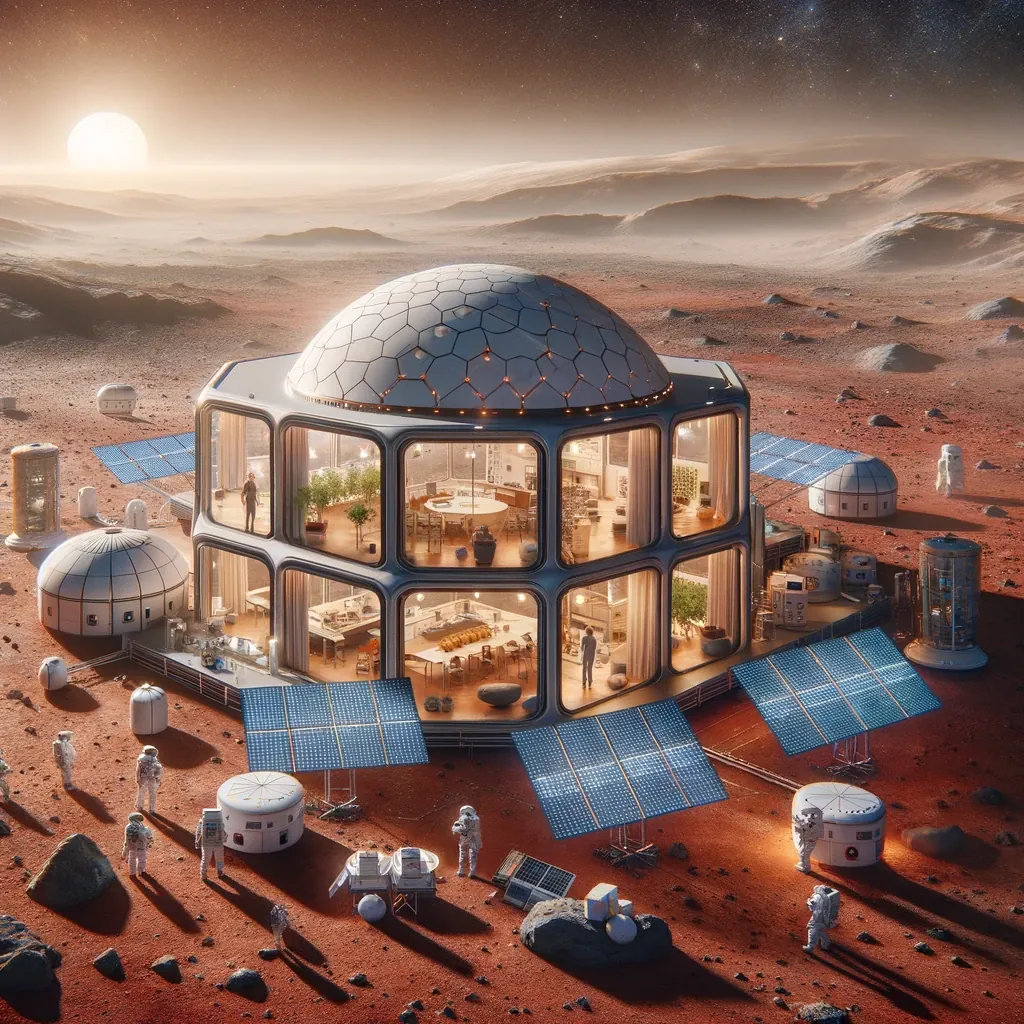In the realm of space exploration and scientific achievement, the National Aeronautics and Space Administration (NASA) continues to pioneer with groundbreaking initiatives aimed at preparing humanity for life beyond Earth. One of the most intriguing endeavors in recent times is NASA’s simulation mission, designed to replicate the conditions of living on Mars without leaving the confines of our planet. This mission, part of NASA’s ongoing efforts to push the boundaries of human space exploration, offers a unique opportunity for individuals with a passion for science, technology, engineering, and mathematics (STEM) to be a part of an extraordinary journey.
The Mission: A Mars Habitat on Earth
Scheduled to commence in the spring of 2025, this mission invites four volunteers to live and work in a 3D-printed habitat spanning 1700 square feet (approximately 155 square meters). This facility, located at the Johnson Space Center in Houston, Texas, is engineered to mimic the challenges astronauts will face on Mars, fostering an environment for research and preparation that is as close to the Red Planet as one can get on Earth.
Who Can Apply?
NASA’s criteria for applicants are stringent, ensuring that only the most qualified and prepared individuals are considered. Candidates must be U.S. permanent residents between the ages of 30 and 55, holding a master’s degree in a STEM field from an accredited institution. Additionally, a minimum of two years of professional experience in STEM or at least 1000 hours of flight time as a pilot is required. This ensures that participants are not only academically and professionally qualified but also possess the resilience and adaptability needed for such a demanding simulation.
The Challenges Ahead
Participating in this simulation is far from a leisurely experience. Volunteers must be prepared to live in confined and isolated conditions for up to a year, with limited contact with the outside world. The simulation includes consuming processed, long-lasting space food and dealing with the psychological and physical strains of isolation—conditions that astronauts will likely face on actual Mars missions. This experience aims to test human endurance and teamwork in extreme conditions, contributing valuable data to NASA’s preparations for human Mars exploration.
Compensation and Benefits
Although termed “volunteers,” participants in this mission will receive compensation, the exact amount of which has not been disclosed but is expected to align with previous NASA simulation projects. Beyond financial remuneration, participants will gain unparalleled experience, contributing to NASA’s mission planning and gaining insights that could shape the future of space exploration.
Post-Mission Opportunities
The end of the simulation does not mark the end of the journey for participants. Successful completion of the mission opens up further collaboration opportunities with NASA, enhancing one’s resume with a truly unique experience. This mission is not just a simulation; it’s a stepping stone to humanity’s future on Mars.
A Step Towards the Future
NASA’s Mars simulation mission represents a significant leap forward in our quest to colonize the Red Planet. It offers a unique blend of challenges and rewards, providing invaluable insights into human resilience and adaptability in extraterrestrial environments. As we stand on the brink of interplanetary exploration, initiatives like this ensure that we are not just dreamers but doers, ready to face the unknown with courage and determination.
For those with a passion for space and a desire to contribute to one of humanity’s most ambitious goals, this mission offers an unparalleled opportunity to be part of history. The future of space exploration is bright, and it starts with steps like these—on Earth, simulating life on Mars.





